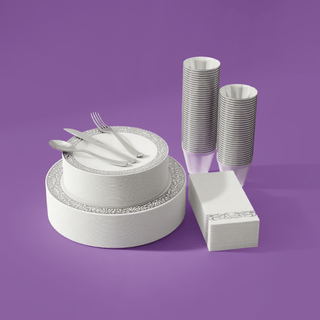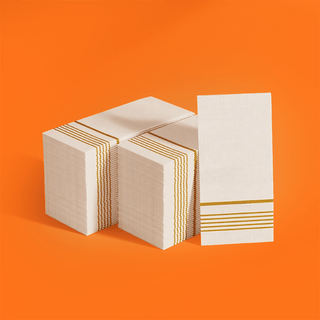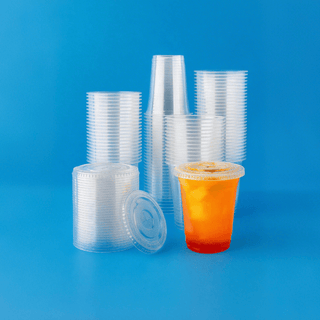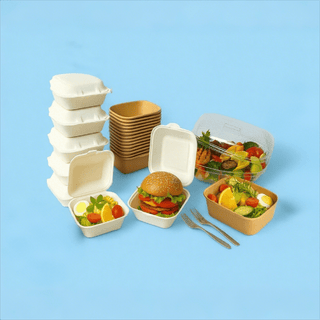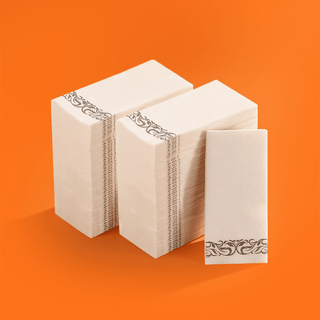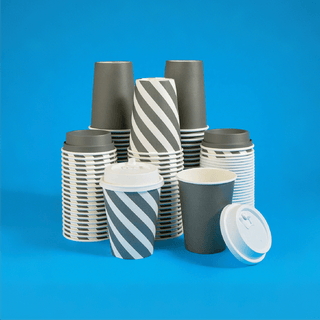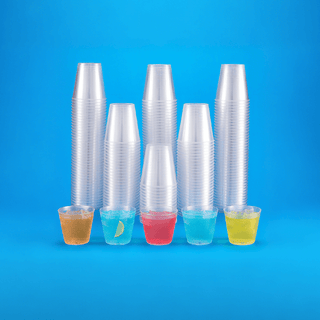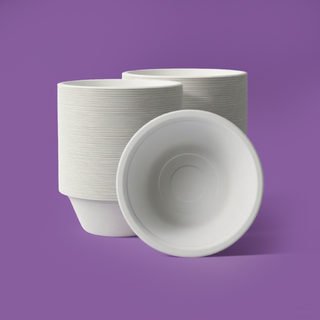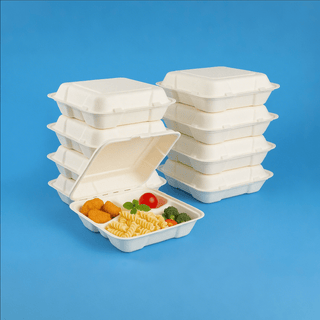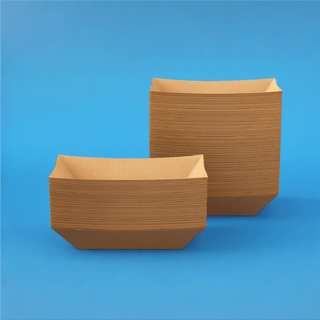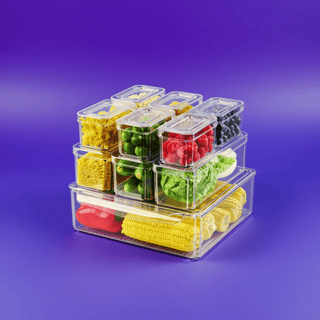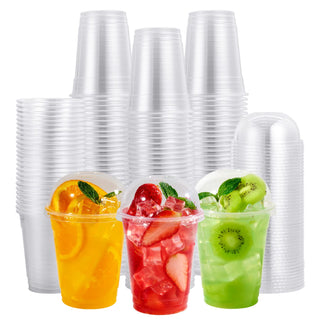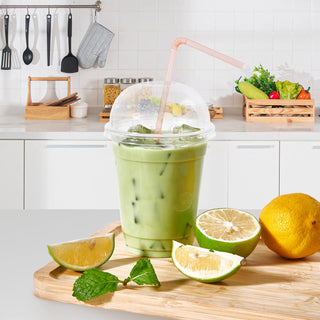
Plastic Cups with Lids Your Ultimate Guide
The world of plastic cups presents many choices. Finding the perfect plastic cups with lid combination can feel overwhelming for business owners and event planners alike.
Are you trying to pick the right plastic cups for your iced coffee, smoothie, or party punch?
This guide helps you find the ultimate beverage service solution. You will learn to quickly find the perfect cup and lid combination for your specific needs.
Key Takeaways
Choose plastic cups based on your drink, its temperature, and your event needs. PET is for cold drinks, PP handles warm drinks, and PLA is for composting.
Match the cup size to your beverage to avoid waste. Use flat lids for simple drinks and dome lids for drinks with toppings.
Always check the lid and cup diameters to ensure a secure fit. This prevents spills and keeps customers happy.
Understand plastic recycling codes. PET is widely recyclable, PP is often recyclable, and PLA needs special composting facilities.
Prioritize safety and quality. Use food-grade, BPA-free cups for peace of mind, especially for events and families.
Exploring the Main Types of Plastic Cups with Lids
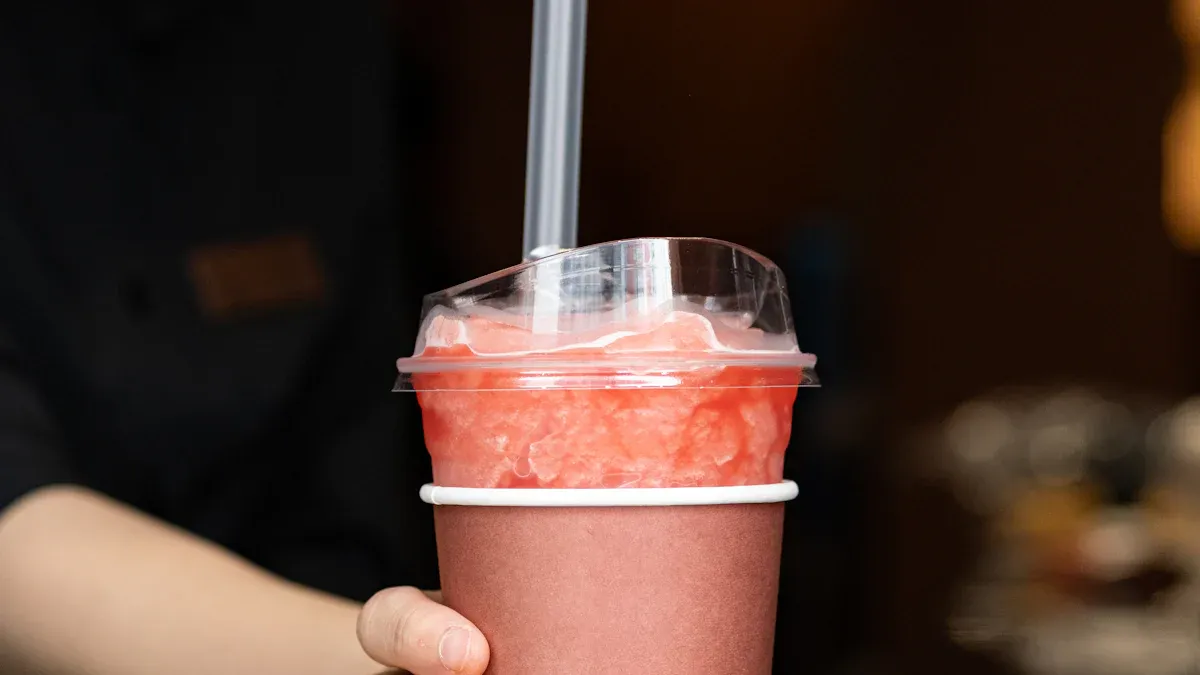
Choosing the right plastic cups with lid starts with understanding the material. The three most common types of plastic cups each offer unique benefits. Knowing the differences helps you select the best option for your drinks and your customers. Let's explore the main types of plastic cups with lids.
Each material has a different manufacturing process. These differences affect the final cup's properties and cost.
Material |
Key Manufacturing Process Differences |
|---|---|
PET |
Requires precise temperature control. This prevents the plastic from becoming hazy and brittle. |
PP |
Needs more energy to melt. Special designs are necessary for trimming and stacking because it is so flexible. |
PLA |
Is the most challenging to process. It is naturally brittle and needs very precise machinery to avoid cracks and waste. |
PET (Polyethylene Terephthalate): The Clarity King
You have likely seen PET plastic cups everywhere. They are the top choice for serving cold drinks like iced coffee, smoothies, and fruit juices. Their main advantage is their outstanding clarity.
PET plastic offers a glass-like appearance that makes your beverages look irresistible. This material is perfect when presentation matters. Key properties contribute to its crystal-clear look:
PET is naturally transparent, letting light pass through without distortion.
It has a high-gloss surface finish, enhancing the visual appeal of the drink inside.
The material maintains its clarity over time, so your products always look their best.
Note: PET is a fantastic choice for cold beverages. However, you should avoid using it for hot liquids, as high temperatures can cause the plastic to warp. It is also a highly recyclable material.
PP (Polypropylene): The Durable All-Rounder
When you need a cup that can handle a bit more, you should consider PP plastic. PP is known for its durability and versatility. These plastic cups are semi-translucent rather than crystal-clear, giving them a frosted or hazy appearance.
PP's biggest strengths are its toughness and heat resistance.
It is sturdy and shatter-resistant, making it a safe option for busy cafes, outdoor events, or kids' parties.
It has a high melting point, with commercial grades withstanding temperatures up to 166 °C (331 °F). This means you can use it for warm beverages, unlike PET.
Because of its durability, many food service businesses prefer PP for certain applications. It is a dependable choice for reusable cups and situations where preventing spills from cracked plastic is a top priority.
PLA (Polylactic Acid): The Eco-Conscious Choice
If sustainability is your main goal, PLA is the material for you. PLA is a bioplastic made from renewable resources like cornstarch. It offers a clear appearance similar to PET, making it one of the most popular types of plastic cups for eco-friendly brands.
The process of making PLA is quite interesting:
Cornstarch is first converted into sugar (dextrose).
Bacteria ferment the dextrose to produce lactic acid.
The lactic acid is then converted into a polymer to create PLA plastic.
While PLA looks and feels like traditional plastic, its disposal is very different. It is commercially compostable. This means it will break down into natural elements, but only under specific conditions.
Important: For PLA to compost properly, it needs an industrial composting facility. These facilities maintain high temperatures (above 54°C or 130°F) and moisture levels. PLA will not break down in a backyard compost bin or a landfill.
PLA cups used to be much more expensive than other plastic cups. Today, the price difference is smaller, making them a more accessible choice for businesses and event planners wanting to reduce their environmental impact.
How to Choose the Right Plastic Cups
Now that you understand the materials, you can select the perfect cup. Your choice depends on four key factors: the beverage you are serving, the right size, the drink's temperature, and the nature of your event. Thinking through these points will help you find the ideal match.
Matching the Cup to Your Beverage
The type of drink you serve is the most important factor. Different beverages have different needs.
Thick drinks like milkshakes and smoothies require strong plastic cups.
These beverages are heavy, so you need a durable material like PET to prevent cracking.
Cups with a wider brim are ideal. They make it easy to add toppings like whipped cream and accommodate larger straws.
A clear cup showcases the colorful layers of a smoothie, making it more appealing.
Acidic drinks, such as orange or lemon juice, also need special consideration. Polypropylene (PP) has excellent resistance to acids. PET plastic, while strong, can be affected by strong acids over a long time. For drinks you prepare in advance, PP is a safer choice to maintain the beverage's taste and integrity.
Sizing Guide: From Ounces to Use Cases
Choosing the right size prevents waste and keeps customers happy. Cup sizes are measured in ounces (oz), and each size has a common purpose.
This table gives you a quick reference for common sizes and their uses.
Cup Size (oz) |
Use Case Example |
|---|---|
12 oz |
Small soda cup, iced drinks |
16 oz |
Popular for boba tea & cold brews |
24 oz |
Extra large drinks, smoothie cups |
Tip: Versatile sizing is key. Brands like Jolly Chef offer popular sizes like 12oz, 16oz, and 20oz. This range allows you to serve everything from kids' party drinks to large iced coffees, all from one trusted supplier.
Hot vs. Cold: Temperature Ratings
You must always match the cup material to the beverage temperature for safety. Using the wrong cup can lead to spills, burns, or a poor customer experience.
PET plastic is only for cold drinks. It has a low glass transition temperature, around 158–176°F (70–80°C).
Hot liquids above this temperature will cause the plastic to soften and lose its shape.
A warping cup is a safety hazard. It can easily spill hot liquid and cause burns.
PP plastic is the go-to choice for hot or warm liquids. It can safely handle temperatures up to 266°F (130°C). This makes it suitable for warm drinks or even microwaving. However, for microwave use, it is best to stay below 212°F (100°C) to prevent any chance of the cup warping.
Considerations for Businesses and Events
For business owners, caterers, and event planners, the right cup choice impacts more than just the drink. It affects your budget, logistics, and guest satisfaction.
Many event professionals choose shatterproof PET plastic cups over glassware for several reasons:
Safety: PET eliminates the risk of broken glass, which is a major concern at busy events. This means less cleanup and a safer environment for guests.
Cost: PET is lighter than glass, which reduces shipping costs. You also avoid the expense of washing and storing reusable glassware.
Convenience: Using a high-quality plastic cups with lid simplifies serving and cleanup, saving you valuable time.
The quality of your cups directly reflects on your brand. As customer stories for Jolly Chef show, durable and stylish cups simplify event planning and impress guests. Caterers, event planners, and families all benefit from reliable disposable plastic cups that look great and perform perfectly. A clear, sturdy cup enhances the drink's presentation and contributes to a positive customer experience.
A Premium Choice: Jolly Chef Plastic Cups with Lid
When you need a reliable and elegant solution, some products stand out from the rest. The Jolly Chef Multiple Sizes Clear Heavy Duty PET Plastic Cups with Flat Lids are a prime example of a high-quality PET cup. They combine style, function, and safety, making them an excellent choice for any event.
Crystal-Clear PET for Superior Presentation
Presentation is crucial for any beverage service. You want your drinks to look as good as they taste. Jolly Chef plastic cups use crystal-clear PET to showcase your creations. This transparency appeals to your guests' visual senses. They can see the vibrant colors and rich textures of your smoothies, iced coffees, or party punches before they even take a sip. This high clarity builds trust and enhances the perceived freshness of the beverage, making it look more appetizing.
Designed for Durability and Safety
You must prioritize safety when serving food and drinks. Jolly Chef designs its plastic cups with your well-being in mind.
They are made from food-grade, BPA-free PET material.
This material is approved by the U.S. Food and Drug Administration (FDA) for food contact.
The sturdy construction ensures the cups are durable and shatter-resistant.
This commitment to quality means you can serve guests with confidence. You know you are using a safe, reliable product. These cups are also recyclable, marked with recycling code 1.
A Secure Fit: The Importance of a Rolled Rim
A leaky cup can ruin a guest's experience. The design of a cup's rim is vital for preventing spills. Jolly Chef plastic cups with lid feature a rolled rim. This design strengthens the top of the cup, increasing its rigidity and structural integrity. The thickened edge creates a tight, secure seal with the flat lid, ensuring a leak-free fit. This small detail provides a comfortable drinking experience and gives you peace of mind during busy events. For convenience, these cups are shipped from a US-based warehouse for fast delivery.
Lids 101: Finding the Perfect Match
Choosing the right cup is only half the battle. The lid you select is just as important for function and customer satisfaction. Different lids serve different purposes, so matching the lid to the beverage is key. Let's explore the main types of lids for your plastic cups.
Flat Lids for Everyday Drinks
You will find flat lids are the most common and practical choice for everyday beverages. They are perfect for drinks like iced tea, soda, or juice. Most flat lids feature a simple X-slot in the center. This design allows you to easily insert a straw while preventing splashes and spills. They provide a secure cover for simple, on-the-go drinks.
Dome Lids for Specialty Beverages
When your drink needs extra space, you should use a dome lid. These lids are ideal for specialty beverages topped with whipped cream, foam, or other garnishes. The high, rounded shape protects the toppings from getting squashed. This makes them the go-to option for milkshakes, frappuccinos, and smoothies, ensuring your beautiful creations stay perfect.
Strawless Sipper Lids
Strawless sipper lids are a modern and eco-friendly solution. Consumer demand for sustainable options and new laws banning plastic straws have made these lids very popular.
These innovative lids have a built-in sipping hole, so you do not need a separate straw. They offer great convenience and help reduce plastic waste.
Many businesses prefer these lids because they are:
Durable: Made from strong and recyclable PET plastic.
Stylish: The clear, sleek design shows off the beverage inside.
Easy to Use: An ergonomic design helps prevent spills.
Ensuring Lid Compatibility
You cannot assume any lid will fit any cup. To get a secure, leak-free plastic cups with lid combination, you must match the lid diameter to the cup’s rim diameter. Manufacturers measure these diameters in millimeters (mm). For example, a 90mm lid is a common size that typically fits 12oz, 16oz, and 20oz cups. Always check the product specifications to ensure you are buying the correct lids for plastic cups.
Environmental Impact and Disposal
Understanding the lifecycle of your plastic cups helps you make responsible choices. Your decisions about disposal have a real environmental effect. Let's look at how you can manage waste and make a positive difference.
The Reality of Recycling Plastic Cups
Recycling seems simple, but the process has challenges. Many different types of plastic exist. Each one contains various additives and colors. You cannot recycle these different plastics together. For example, green PET bottles must be separated from clear ones. This complexity makes sorting difficult.
Even with these challenges, recycling efforts are growing. PET, the material in many clear cups, is highly recyclable. However, recycling rates in the United States show there is room for improvement.
Year |
US PET Recycling Rate |
|---|---|
2020 |
27.1% |
2021 |
28.6% |
When you choose a recyclable cup, you support a system that conserves resources.
Understanding Resin Identification Codes
You have probably seen a number inside a triangle on the bottom of plastic products. This is a Resin Identification Code (RIC). It tells you the type of plastic the item is made from.
These codes are not a guarantee that the item is recyclable in your area. They simply identify the material.
Here are the most common codes for cups:
#1 PET (Polyethylene Terephthalate): Widely recyclable.
#5 PP (Polypropylene): Often recyclable, but check local rules.
#7 PLA (Polylactic Acid): Not recyclable; requires industrial composting.
Compostable vs. Biodegradable Options
PLA cups are a popular eco-friendly choice. They are commercially compostable, not biodegradable. This means they break down into natural elements but only in a special facility with high heat. They will not break down in a landfill or your backyard compost pile. Choosing compostable options is a great step toward reducing environmental impact, but only if you can get them to the right facility.
Tips for Responsible Disposal
You can take simple steps to dispose of your cups correctly. Proper disposal is crucial for making sure recyclable materials are actually recycled.
Look for the recycling symbol on the cup to see if it is recyclable.
Always empty and rinse your cups before placing them in the bin.
Check your local recycling guidelines to see which plastics they accept.
When possible, choose reusable options to reduce waste altogether.
Choosing the right plastic cups is easy when you follow a few steps. First, identify your beverage and event needs. Next, select the best material for your drink's temperature and presentation. Finally, pick a compatible lid style. The perfect cup is one that provides function and safety for your guests.
Feel confident in your choice and Host Like a Pro with Jolly Chef Disposable Tableware Solutions.
FAQ
Can I reuse PET plastic cups?
You should use PET cups for single-use occasions for the best safety. While you can reuse them with careful hand washing, they are not designed for long-term use. Dishwashers can damage the plastic.
What is the best cup for a kids' party?
You should choose a durable, shatter-resistant cup for kids' parties. PET plastic cups are a great option because they prevent dangerous breakage. A secure, leak-free lid is also essential to minimize spills and messes.
Why do my lids not fit my cups?
Lids and cups must have matching rim diameters to fit correctly. Manufacturers measure this in millimeters (mm). Always check the product specifications to ensure you buy the right lid size for your cups.
Are Jolly Chef cups safe for my family?
Yes, they are very safe. Jolly Chef makes its cups from high-quality, food-grade PET plastic. This material is completely BPA-free, so you can serve drinks to your family and guests with confidence.

